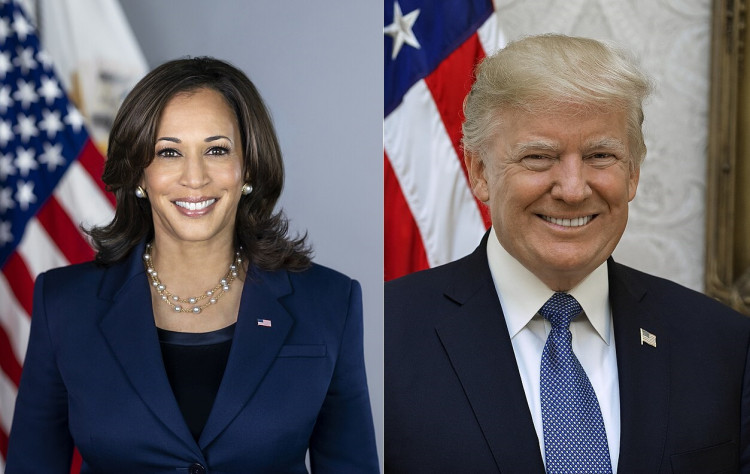Kentucky election officials are investigating an alleged ballot-marking error in Laurel County after a video showing a voting machine selecting the wrong candidate gained widespread attention online. In the video, a voter attempts to select former President Donald Trump on the touchscreen but instead sees Vice President Kamala Harris's name highlighted. Kentucky's Attorney General Russell Coleman confirmed that his Department of Criminal Investigations responded quickly, removing the machine from service to inspect it for possible malfunctions.
"The Kentucky Attorney General's Department of Criminal Investigations quickly responded to the complaint from Laurel County," Coleman said. "Detectives have been in touch with the county clerk and recommended they change out the voting machine." He assured voters that "any potential issues will be addressed quickly," aiming to maintain public confidence in Kentucky's election system amid a wave of misinformation surrounding voting technology.
The issue arose on the first day of general in-person early voting in Kentucky. The video, originally posted to TikTok by a voter, shows her pressing Trump's name repeatedly only to see Harris's name selected. Social media amplified the video with claims of "vote-switching" and election interference. These claims prompted a swift response from Laurel County Clerk Tony Brown, who confirmed that an AG investigator inspected the device and managed to replicate the issue temporarily by tapping between the two candidates' names. However, repeated attempts to recreate the error were unsuccessful.
NEW: Some voting machines in Kentucky are NOT ALLOWING voters to select President Trump.
Instead, when they tap “Trump,” Kamala Harris ends up being selected.
Add it to the list of reasons to switch to paper ballots.
Why does this always seem happen in one direction and not… pic.twitter.com/2QOO93DS1v — Nick Sortor (@nicksortor) October 31, 2024
Brown clarified that the issue occurred on a ballot-marking machine, which only marks the voter's selections on a paper ballot that can be verified before being cast. "If the machine prints a faulty ballot, voters are able to discard it and print a corrected one," Brown explained. He expressed disappointment over the incident, stating, "We strive to have accurate, secure, and safe elections that we are proud to provide to our citizens."
Adding to the official statements, Kentucky Secretary of State Michael Adams took to social media, reassuring voters that the error had not affected any ballots cast. "There is no 'vote-switching.' The voter confirmed that her ballot was correctly printed as marked for the candidate of her choice. Get your voting information from legitimate sources," Adams posted.
The machines used in Laurel County are manufactured by Election Systems & Software (ES&S), one of the leading voting system providers in the United States. ES&S spokesperson Katina Granger explained that errors of this nature often result from user interactions with the touchscreen rather than any inherent flaw in the equipment. "Touchscreen voting machines do not flip votes," Granger said. "Most commonly, reported instances stem from a voter not touching the text box in the correct place. In this case, you can see the voter is attempting to touch the tiny check box. They can touch anywhere inside the large box containing the candidate's name."
Officials from nearby counties reported no issues with voting machines, reinforcing the notion that the incident was isolated. A Knox County election official confirmed that no such complaints had been reported, and an election worker in Fayette County, where Lexington is located, also noted no issues with their machines. The Dispatch Fact Check, which reviewed the incident, found no similar reports from other Kentucky counties, indicating that the issue was likely specific to the device or user experience in Laurel County.
To ensure voter confidence, Brown posted his own video demonstrating the machine's proper function by selecting various options without error. He emphasized that such incidents are rare and that election integrity is a top priority for officials.
This incident highlights the layers of security and verification present in the U.S. voting process, especially as misinformation about voting machine reliability circulates online. In fact, the U.S. voting system has numerous safeguards. According to Derek Tisler, counsel in the Brennan Center for Justice's elections program, "Public trust is so essential to the democratic process, and that is why elections are transparent." Tisler explained that optical-scan and touchscreen systems both create paper records that allow voters to verify selections and audit results after votes are cast.
ES&S, as well as other voting machine manufacturers, is required to meet stringent certification standards set by the federal Election Assistance Commission (EAC). These include stress tests, audits, and software reviews. ES&S devices, for instance, incorporate encryption and are designed without Wi-Fi or network connections to prevent unauthorized access. "Outside of physical controls, we use secure practices for the creation, transfer, and storage of important election files and data," Granger said.






